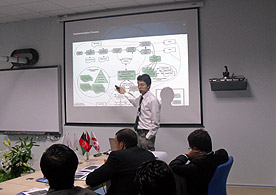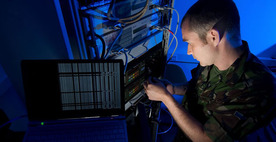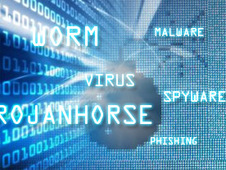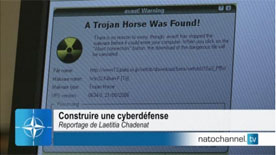Defending against cyber attacks
High resolution photos
Opinions
- Security Policies 2.0: Can Facebook, Twitter and Co Make an Impact, - Stefanie Babst - Atlantic-Community.org - 6 Sept. 2011
- NATO Secretary General and young professionals discuss new security challenges - 19 November 2010
- "NATO Builds Its Cyberdefenses" - Article by SACT General Abrial outlining NATO’s cyberdefence efforts in the New York Times op-ed
Last updated: 09-Oct-2012 13:51
News
-
Afghan managers train in cyber defence
21 May. 2012

Managers of the SILK-Afghanistan project will undergo training in cyber defence at the Informatics Institute of the Middle East Technical University (METU) in Ankara, Turkey from 21 May to 1 June. The training, funded by the NATO Science for Peace and Security (SPS) Programme, demonstrates NATO's long-term commitment to Afghanistan during the transition phase and beyond.

-
NATO Rapid Reaction Team to fight cyber attack
13 Mar. 2012

Cyber warfare is war without any noise, tanks or aircraft. Currently, it is a profitable, relatively risk-free and anonymous crime. It is often difficult to identify the origin or perpetrators of the attack - and this is the main problem. In order to be more effective, all the parties involved must work together: NATO, the private sector, international organizations, academia. By the end of 2012, a rapid reaction team (RRT) capability of NATO cyber defence experts will be operational.

-
NATO signs contract for Cyber Defence
08 Mar. 2012

The NATO Consultation, Command and Control Agency (NC3A) celebrated with a ceremony on 8 March 2012 the award of a contract for upgrading the NATO cyber defence capabilities. The award to private industrial companies will enable the already operating NATO Computer Incident Response Capability (NCIRC) to achieve full operational capability by the end of 2012.

Official Texts
- Chicago Summit Declaration issued by the Heads of State and Government participating in the meeting of the North Atlantic Council in Chicago on 20 May 201220 May. 2012
- Lisbon Summit Declaration issued by the Heads of State and Government participating in the meeting of the North Atlantic Council in Lisbon20 Nov. 2010
- Active Engagement, Modern Defence - Strategic Concept for the Defence and Security of the Members of the North Atlantic Treaty Organisation adopted by Heads of State and Government in Lisbon19 Nov. 2010
PDF Library
- Defending the networks: The NATO Policy on Cyber Defence - 4 Oct. 2011
PDF / 139.72 kb - Tackling New Security Challenges31 Jan. 2012


























